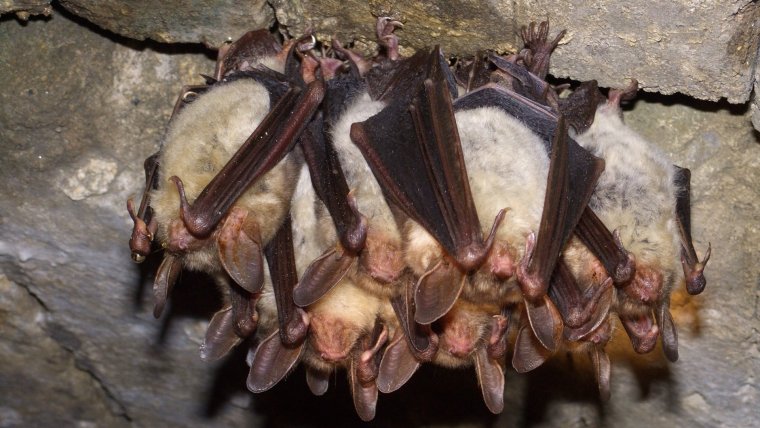| News / Science News |
Hibernation season over, will disease-ridden bats emerge from caves and mines this spring?
NSF | MARCH 29, 2015
Bats by the thousands congregate in such caves and mine shafts, spending their winters away from the elements. Their promixity to one another, along with the caves' and mines' natural humidity, has fueled the outbreak of one of the worst bat diseases in history: White Nose Syndrome (WNS).

Greater mouse-eared bats, European bats that can become infected with White Nose Syndrome. Credit: Ivan Horacek/NSF
The disease is caused by the fungus Pseudogymnoascus destructans, which results in a skin infection, a distinctive white growth around the muzzles and on the wings of bats. WNS spreads as bats hibernate in winter. The fungus was likely carried to the United States by humans traveling to and from Europe.
WNS caused a 10-fold decrease in colony sizes of hibernating bats in eastern North America. To obtain information on the status of bat colonies, biologists visit subterranean habitats where bats hibernate during winter--caves, mines, old war bunkers, anywhere that's dark, cool, moist and protected from harsh winds and freezing temperatures.
The researchers found that declines in U.S. bat populations have resulted in colonies in North America and Europe that are roughly the same size.
This study provides important insights into how a devastating disease has affected bats in the U.S. Such information is essential for developing management plans to help save these species.
YOU MAY ALSO LIKE

